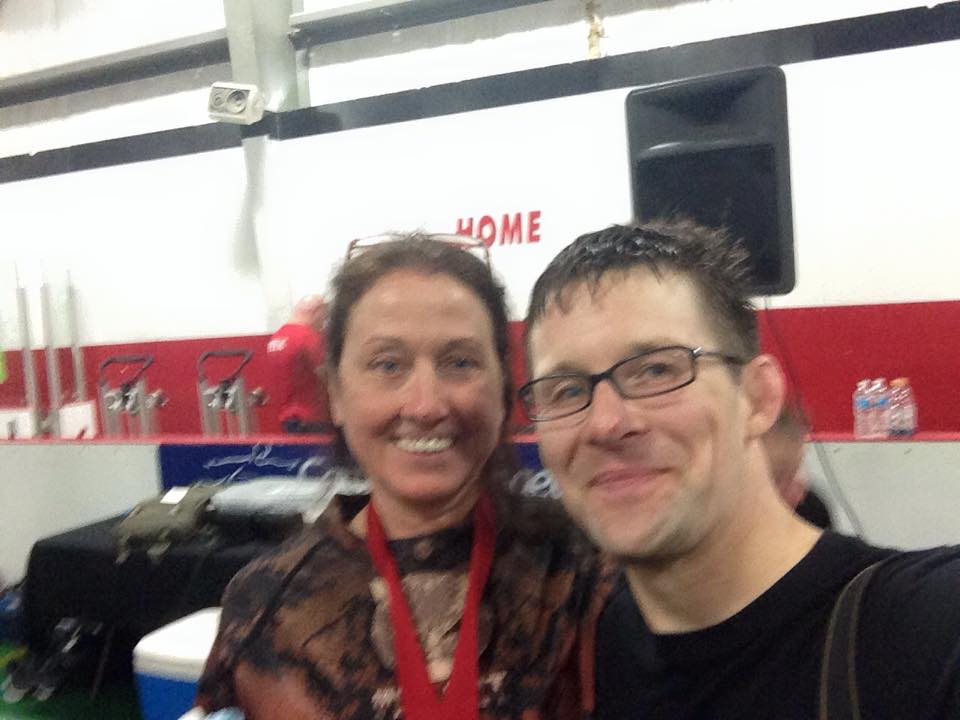You’re never too old to start jiu-jitsu.
People think that’s a slogan, but it’s the truth. Every week I have a conversation with someone who tells me they’d start training, but they’re too old. As someone who started in the latter half of my 30s, I usually feel qualified to dispel the myth that Brazilian jiu-jitsu is only for young people.
Even more qualified that me to speak on this, though, is my dear friend Betty Broadhurst. Betty started even later in life than I did, and is still an avid competitor. Betty is in the Master 7 division, and if you’re unfamiliar with the International Brazilian Jiu-Jitsu Federation divisions, you should know that means over 60 years of age.

Yes, there are entire divisions dedicated to these age ranges, and they’re growing. It’s still difficult to find a match sometimes. Betty’s friend Gordon Ryan famously started a campaign to try to get her a match at the World Championship by offering a free private lesson to anyone who could find her a Master 7 Purple Belt to grapple with.
But Betty’s still out there at regional grappling events, trains consistently, and through her organization Roll Forever — you’ll see me rocking one of their shirts fairly regularly — she does a lot of good in the grappling community.

Maybe you’re not quite 60, but you’re wondering if taking up jiu-jitsu is right for you at this time in your life. Let me assure you, that yes it is. Personally, I was in better shape at 40 than I was at 20, and jiu-jitsu was the primary reason for that.
Because of the technical nature of the art, you can enjoy learning and grappling while not putting yourself at significant physical risk. Injuries happen, of course, as they do in every sport, but because we focus on technique — and at Bellingham BJJ, we make sure that our training partners are good contributors to a healthy gym environment — we maximize the benefits of a good, hard training session while minimizing unnecessary risk.
Maybe you already do jiu-jitsu, but you’re having more and more birthdays, and you want to be sure you train for life. This is something a lot of us can identify with, so let’s talk about a few things you can do to be sure you stay training as long as possible.
Here are some tips for longevity on the mats:
Roll with structure, not with explosive movements: Andrew Smith — our first guest on the Dirty White Belt Radio show, as well as one of our most recent guests — told me that he tries to train every day like he’s 70 years old, because he hopes to be training when he turns 70.
That means if you’re stuck in a position and think you might be able to flex and bust out of it … don’t. Take our time, do the correct movements, and get out using the skills you’ve learned. Your technique will thank you, because you’re practicing technically sound movements, and so will your joints!
Learn to love drilling: This is actually a great principle not just for those advancing in age, but everyone who does jiu-jitsu. People love to roll, because sparring is exciting and fun. That’s great, because it’s what keeps our art alive and effective. But drilling is where you build patterns, and most importantly, do so safely.
Drilling isn’t as viscerally thrilling as rolling, but it’s very important to both your technical prowess and your longevity in the art. Plus, if you love drilling, then you can do more classes without the wear and tear on your body that rolling can create.
Take care of your body off the mat, too: As we get older, we have to be more conscientious about nutrition. If we want to keep the flexibility we’ve gained, we need to be more attentive to movement as well. Our good friend Samantha Faulhaber has a whole business devoted to this, and Sam plans to visit us sometime in the next year to show us how daily movement practice can improve grappling — and life — as we age.
Jiu-jitsu is amazing. If you haven’t started, no matter how old you are, start. If you have started, but you wonder if you’ll be doing this at 50, 60, or 70 … you can be. If I get to 70 before you, I’ll send you a postcard from the mats.

